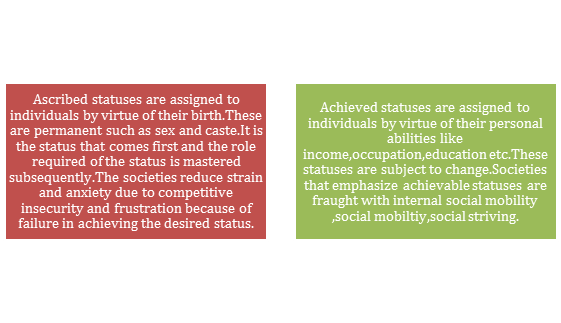Stratified Societies
Stratification is common among complex societies. The key element in a system of social stratification is inequality. The most important dimension of inequality is implicit and explicit in society's social structure. Social structure refers to the orderly arrangements of social elements in a definite pattern that governs rational placement and reciprocal behavior. A status is defined as a position in the social pattern. Each individual is socially assigned a status that he/she occupies in relation to other individuals and statuses. As distinct from the individual who occupies it any status is a mere collection of certain specific rights and duties. The dynamic aspect of a status is the role characteristic of each status. Any individual is said to be performing a role when he/she puts into effect the rights and duties characteristic of his/her status. Thus status and role go hand in hand. According to Ralph Linton statuses are of two types:

On the whole it is seen that within a social system every individual is assigned a status. Each status has a specific role and above all each individual occupying a status is conferred different degrees of social, economic and political privileges. The different quotas of prestige, property and power are given to each individual. Based on these differences it is possible to arrange the statuses so that those that receive equivalent amounts of the above factors can be grouped together into a stratum and thereby be distinguished from other strata. The strata are arranged hierarchically with those that receive the most at the top and with those that receive the least at the bottom.
|
|

 |
© 2025 sociologyguide |
 |













